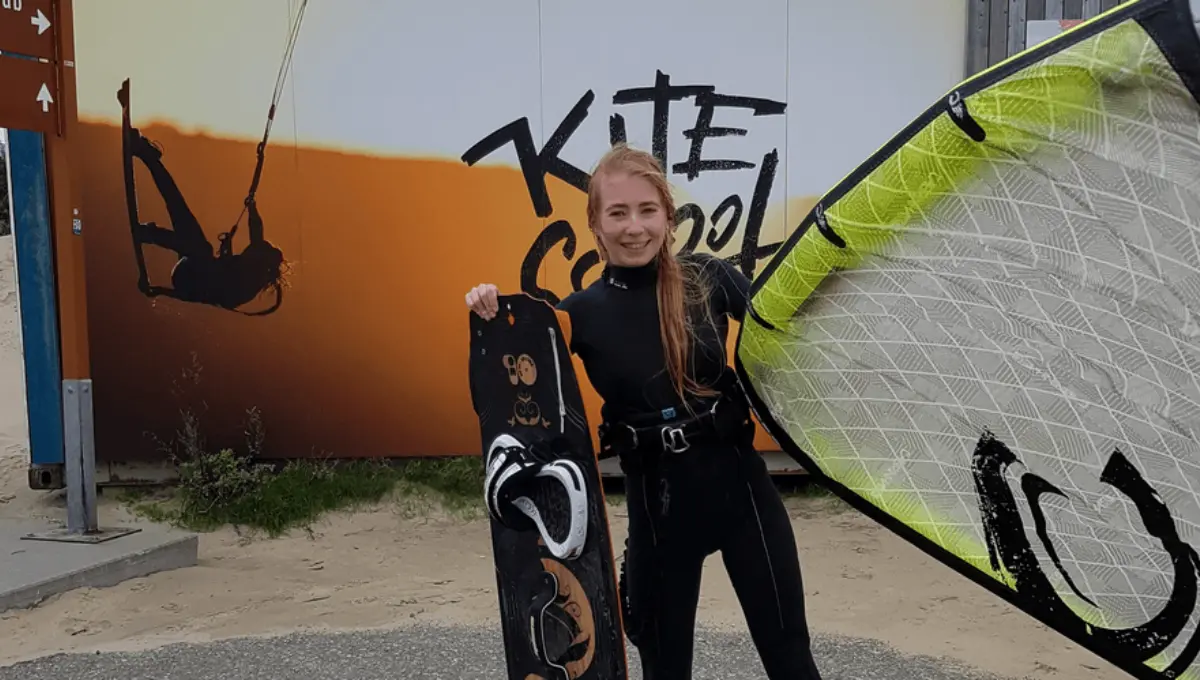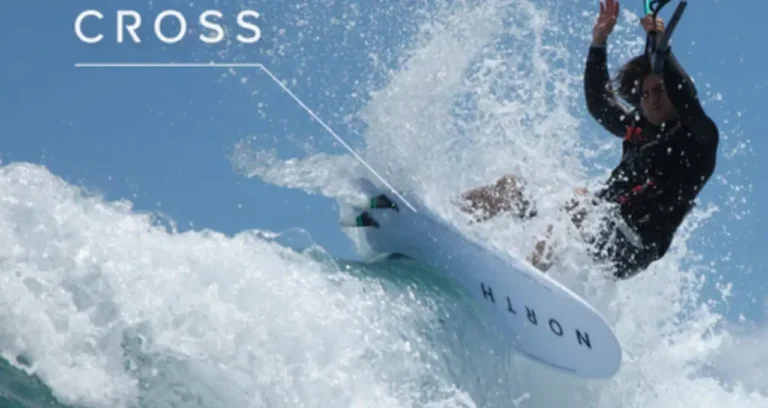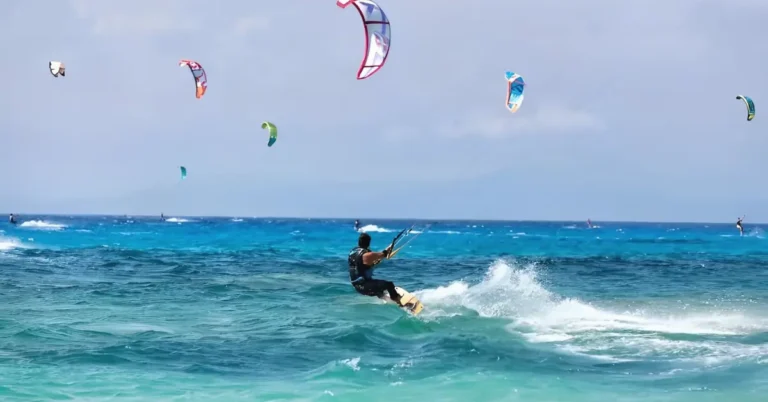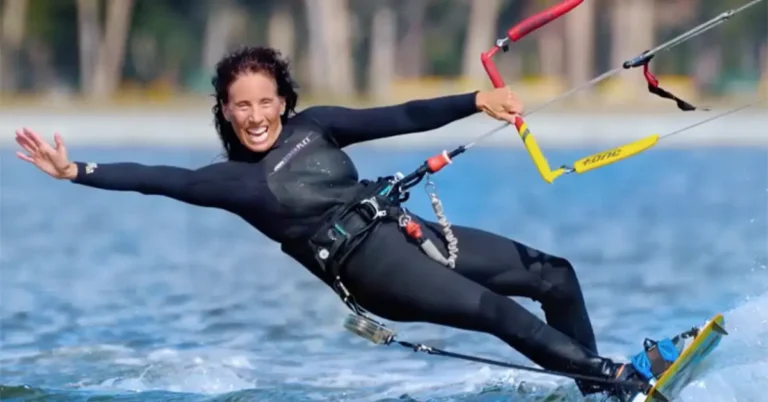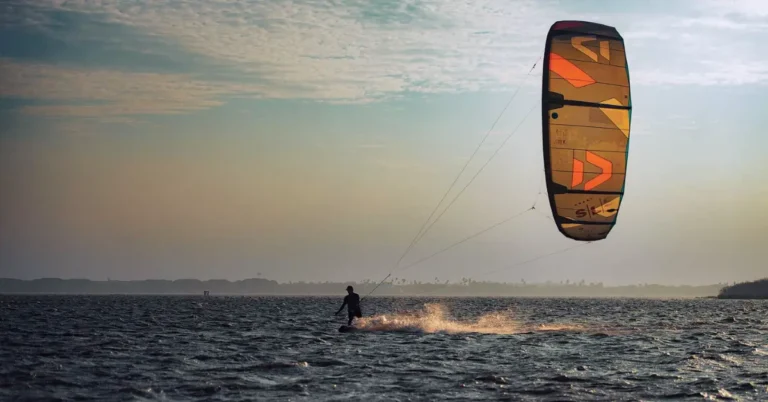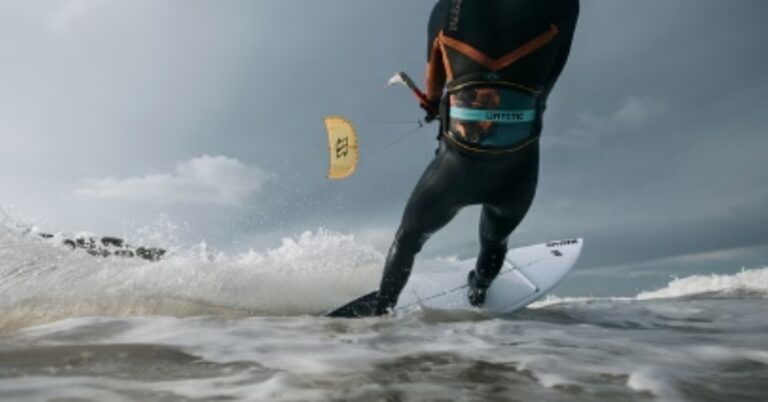What Are The Best Kitesurfing Kites For Beginners?
The best kitesurfing kites for beginners are typically those that offer easy relaunch, stability, and forgiving characteristics. Kites like the Slingshot Rally, Cabrinha Switchblade, and North Neo are popular choices.
These kites provide predictable performance and are designed to help beginners progress quickly while feeling confident on the water. It’s essential to consider factors like safety features, ease of use, and durability when selecting a kite as a beginner.
After completing my first kitesurfing lessons, I’m thrilled! I’m eager to dive right in and purchase my kitesurfing kite so I can start honing my skills independently. However, with so many options available, it’s challenging to decide which kite is best suited for me as a beginner. To address this, let’s tackle some common questions.
Also Read: History of kitesurfing
What are the 4 important requirements every beginner kite should have?
As a beginner, rapid progress is key. Four crucial features for a beginner kite include
Which kite to buy as a beginner?
If you’re feeling pumped after your initial lessons and are ready to invest in a new kite right off the bat, we suggest opting for an all-round or freeride kite, such as those with a delta or open C-shape design, ideal for beginners.
Every brand offers such kites in their lineup. Examples include the Duotone Evo, Cabrinha Moto, North Reach, F-one Bandit, and Naish Triad. These kites are versatile, suitable for prolonged use, and perfect as your skills progress, allowing you to tackle more challenges and even start practicing your first jumps.
Kitesurfing Schools Often Teach With Waves Kites
Wave kites, like the Carbinha Drifter, North Carve, Airush Session, and Duotone Neo, are preferred by kitesurfing schools for several reasons. These kites offer exceptional depower, fast relaunch, and forgiving characteristics, making them ideal for beginners.
Their large depower capability allows students to maintain control in increasing winds, while quick relaunch facilitates easy recovery if the kite crashes into the water.
Additionally, wave kites’ good upwind properties enable students to return to their starting point effortlessly, minimizing the need for laborious walks back to shore. Therefore, Wave kites are commonly used in kitesurfing schools to facilitate an optimal learning experience for beginners.
What size kite should choose as a beginner?
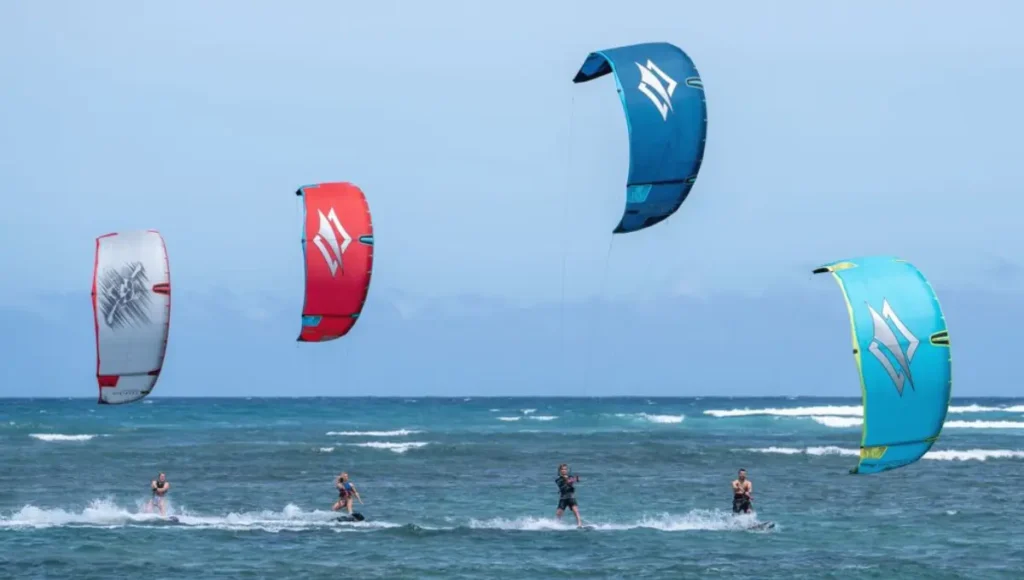
Selecting the appropriate kite size depends on several factors:
It’s generally recommended to start with the largest kite in your intended set. This allows you to practice in easier conditions, typically requiring a wind force of around 5 (17 – 21 knots) for smooth sailing with calm waters and stable winds.
For most beginners, this translates to a kite size ranging between 9 and 12 square meters, adjusted according to your weight.
As you progress and master the basics with your first kite, you’ll naturally consider adding a second kite to your arsenal. This enables you to kite in various wind conditions and explore more advanced techniques like jumps.
When planning a set of 2 kites, aim for a difference of 3 square meters between them to maximize wind range. For instance, combinations like 12 and 9 square meters, or 10 and 7 square meters, are common choices.
Opting for a set of 3 kites? Maintain a 2 square meter difference between each kite for versatility. Examples include sets like 12-10-8 or 11-9-7 square meters. Always begin with the largest kite and adjust accordingly based on wind conditions.
Beginner kite size
| Body Weight | Kite Size |
| 30 – 40 kg | 5 – 6 m^2 |
| 40 – 50 kg | 6 – 7 m^2 |
| 50 – 60 kg | 7 – 8 m^2 |
| 60 – 70 kg | 8 – 9 m^2 |
| 70 – 80 kg | 9 – 11 m^2 |
| 80 – 90 kg | 10 – 12 m^2 |
| 90 – 100 kg | 11 – 13 m^2 |
| 100 – 110 kg | 12 – 14 m^2 |
What size kitesurf bar do I need?
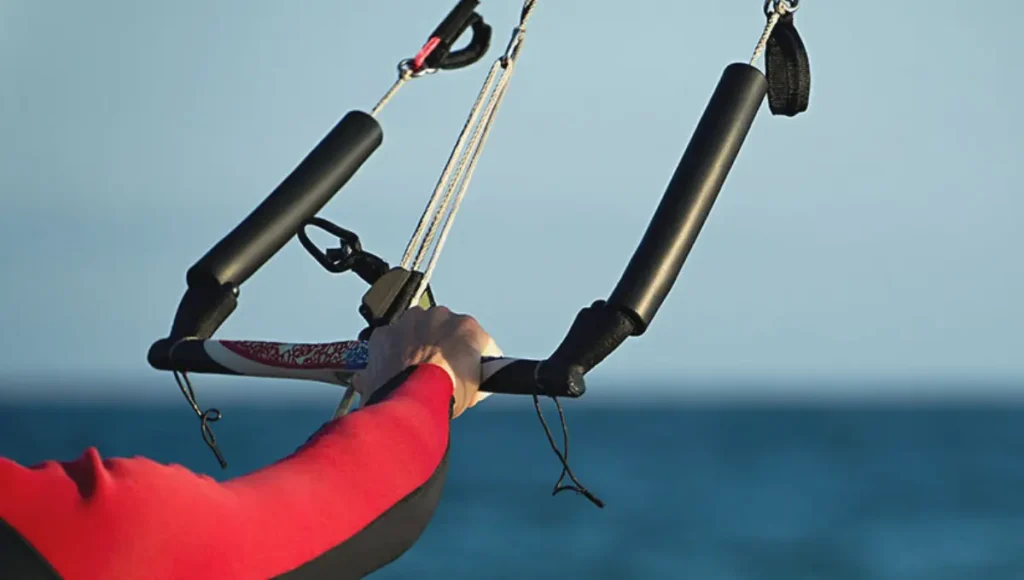
While the size of the bar is less critical than the size of the kite, compatibility is key. Generally, any size bar from a reputable brand can be paired with the corresponding kite from that brand.
Brands often offer different bar sizes, with the smaller bar typically recommended for kites smaller than 10m² and the larger bar for kites of 10m² and larger. A larger bar allows for increased steering angle, making it easier to maneuver larger kites and reducing sluggishness.
When considering using a bar from one brand with a kite from another, attention to detail is crucial. Ensure compatibility regarding factors like power line split (high or low) and attachment points.
Mismatching these elements can compromise the kite’s performance and characteristics. The ends of the bar and the kite should also align in terms of attachment mechanisms; otherwise, adapters like pigtail sets may be necessary.
Do need a long or short kitesurf leash?
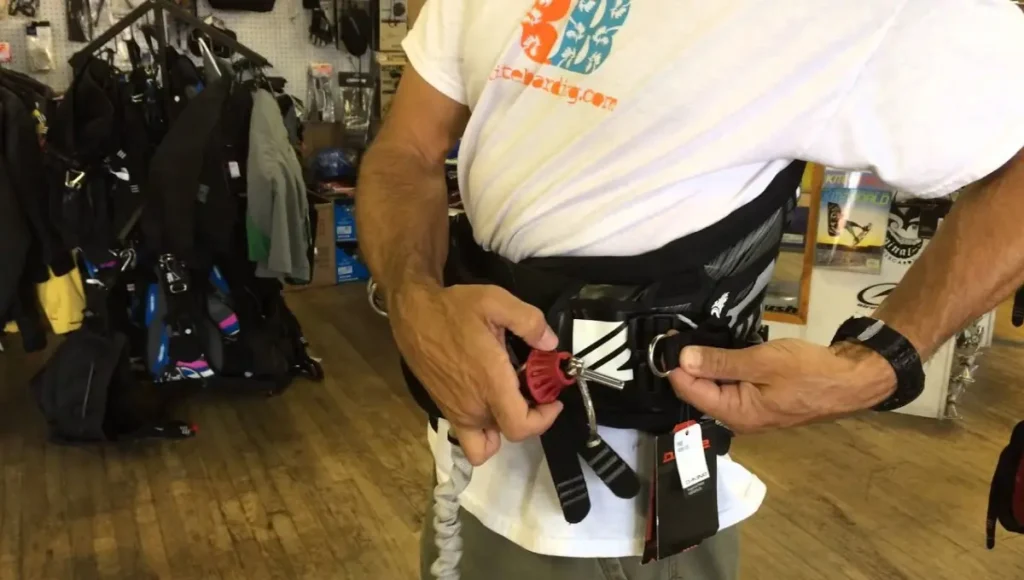
For beginners in kitesurfing, it’s recommended to opt for a short leash. Attach the short leash to the front of your harness, ensuring it’s easily accessible when needed. In case you activate the safety system and the kite is solely connected to your leash, you’ll be pulled towards the kite.
This setup differs from using a long leash, typically preferred by advanced kite surfers engaging in unhooked tricks like handle passes. As a novice kitesurfer, sticking to a short leash is the best choice.
As a beginner, should buy a new or second-hand kite?
If you’re a beginner in kitesurfing, prioritizing safety is paramount in this extreme sport. Opting for a new kite ensures compliance with the latest safety standards and guarantees pristine lines, enhancing overall safety.
Fresh canvas on a new kite maximizes its efficiency in handling wind, enabling more direct control and better performance, particularly in low-end conditions. Starting with new kitesurfing gear facilitates easier learning and faster progress.
While purchasing second-hand kites is an option, there are crucial considerations. It’s advisable to avoid kites older than six years, as newer technologies continually enhance efficiency and safety.
Inspect any used kite meticulously for repairs or damage, as excessive repairs can compromise stability and safety. Beware of excessively cheap second-hand kites, as they may lack suitable safety features, reliable relaunch capabilities, and modern technologies, posing risks to beginners.
Is there a safety standard for kites?
While there isn’t a safety standard specifically for kites themselves, there is one for the safety systems incorporated into kite bars: the quick-release system. The latest quick-release systems are compliant with ISO 21853 as of 2021.
Meeting this ISO standard ensures that your quick-release system will function reliably even in the most extreme conditions. This provides peace of mind for kite surfers, allowing them to enjoy the sport safely on the water.
How do I maintain my kite?
Maintaining your kite doesn’t require much effort, but there are important considerations to keep in mind. Avoid folding or storing your kite while it’s wet, as this can promote mold growth in the canvas.
If you must pack up your kite when it’s wet due to rain, ensure to let it dry thoroughly as soon as possible afterward. This prevents moisture from seeping into the fabric and helps preserve the integrity of your kite.
Frequently Asked Questions
Conclusion
For beginners in kitesurfing, the best kitesurfing kites are typically bowing or delta-shaped kites. These kites offer stability, easy relaunch, and forgiving flying characteristics, making them ideal for those just starting.
Popular choices for beginners include kites like the Slingshot Rally, Cabrinha Switchblade, and North Reach. These kites provide predictable performance and help beginners progress quickly with confidence on the water.
Beginners need to choose a kite that suits their skill level and offers safety features to ensure an enjoyable learning experience. With the right kite, beginners can embark on their kitesurfing journey with excitement and ease.
